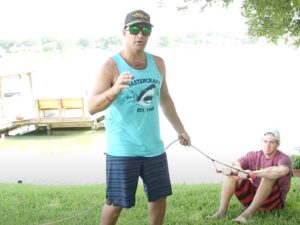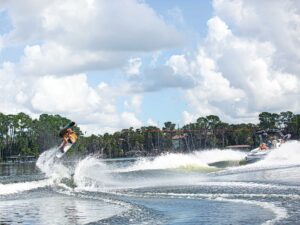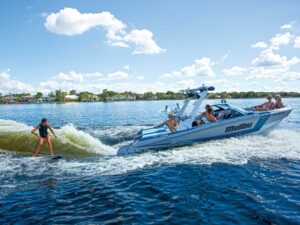It’s not hard to get caught in the trap of viewing your slalom game through a microscope. Our wonderful sport has so many factors that go into a simple pass — skiers of all levels can fall victim of trying to control factors that have little payout in the big picture of their performance. That’s why I tell students that there are only two things they need to understand and become proficient at in order to improve, regardless of their level: creating space and keeping a tight line. Of course, there can be several components to accomplishing these goals, but understanding them will, without a doubt, increase your buoy count.
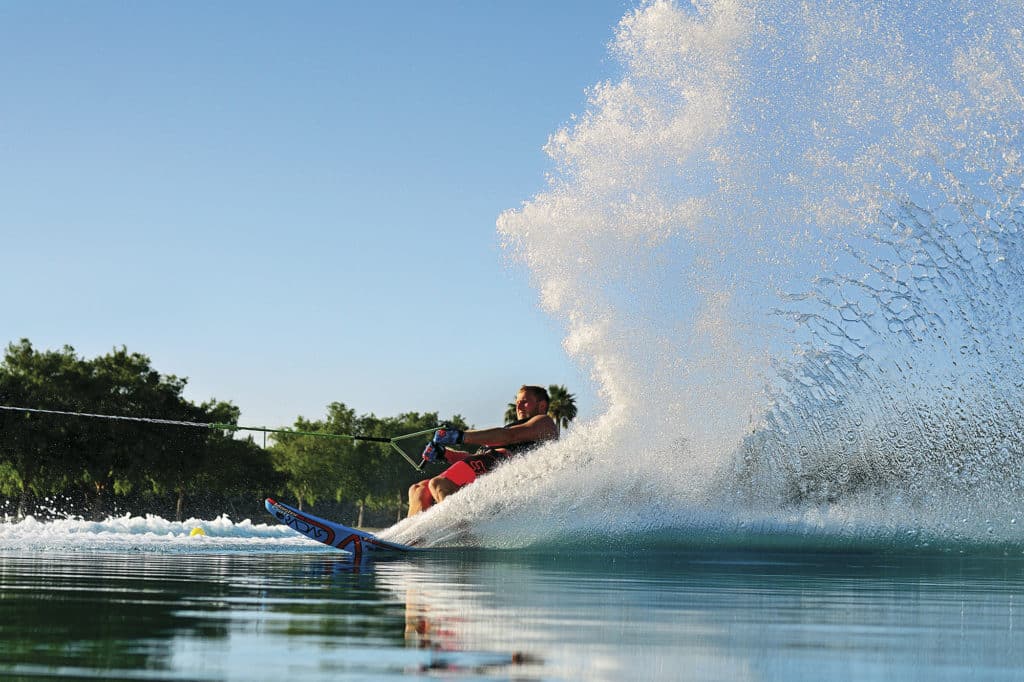
Create Space:
Remember the first time you successfully rounded all six buoys in the slalom course? It was probably the same time you managed to keep your ski on edge through the wakes. The higher the edge angle of the ski, the better it will hold angle across course, and the more space you’ll create before the next buoy. As the boat speed increases or the line gets shorter, it requires more edge angle to create the same space.
Lean angle is simply how much you have your feet between your shoulders and the pylon. Do not confuse lean angle with pulling hard: Lean angle gives a skier more leverage. This allows you to ski with less load on the rope because you don’t need to fight the boat. When you get the ideal lean angle for the pass you are running, it should feel like you can totally relax and let the natural swing of the boat take over.
What to change: Check your posture and increase your lean angle. Make sure you have a straight posture with your upper body. Contract the muscles between your shoulder blades as you are waiting to pull out for the gates, and try to keep them engaged at all times. This will help you relax your arms more as you have moved the point of connection (leverage point) away from the boat a little. Many skiers focus on the hips being up, but the lower body falls into place when the shoulders are in control and the skier is able to maintain adequate lean angle behind the boat.
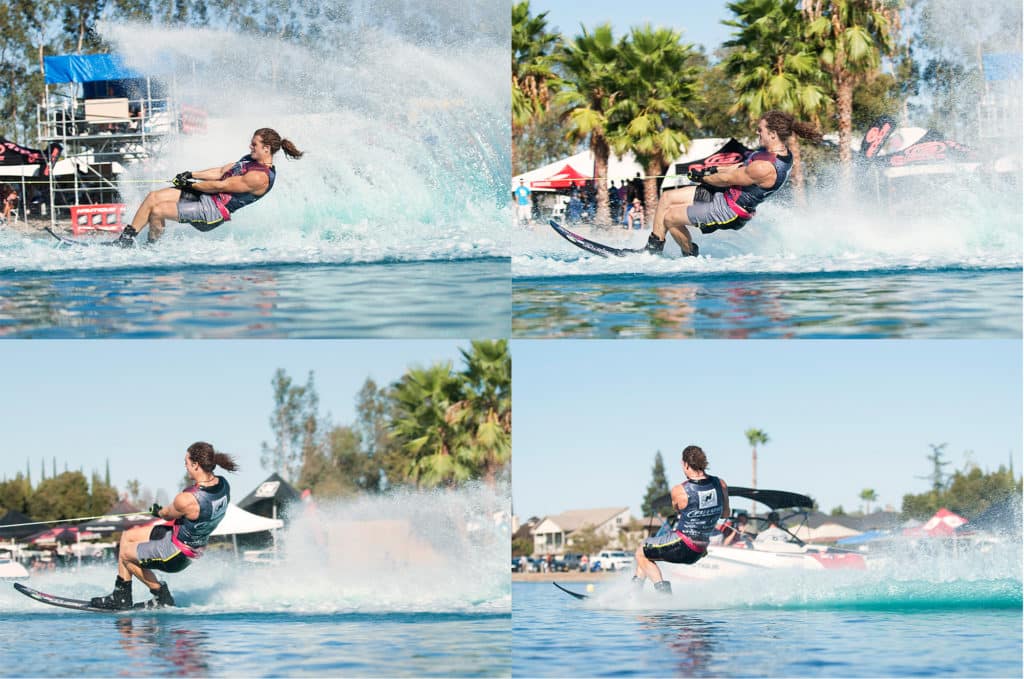
Keep a Tight Line:
Most line-tension issues happen at the edge change. This is the point in the course where we become vulnerable to the down-course pull of the boat, and we can lose direction very quickly. Slack is caused by running the same direction as the boat for too long. It can happen for several reasons, but two main issues almost always cause loose line. The first is the direction of your shoulders at the edge change; the second is having too much ski in the water too early in the pre-turn. The widest point on a ski is just in front of your front foot; when the water crosses that point, the ski wants to turn. If you cross that point too early, the ski will slowly pull inward, causing you to run straight and narrow into the buoy. Understanding the balance in the edge change by positioning the shoulders outward with a little bit of leverage will allow you to control how quickly you engage the “turning” portion of the ski.
What to change: Focusing on the position of your shoulders through the edge change should be a natural feeling after fixing your posture (from above). When you have control of your upper body through correct posture and adequate lean angle, the lower body is free to edge change without the boat taking over and controlling the upper body. As your feet release and you transition onto a new edge, keep your shoulders very still and maintain a tiny bit of lean, with a focus on the tension in your back shoulder (left shoulder when edging to the left; vice versa when edging to the right). This shoulder is the end of the “pendulum swing.” Allow this movement to continue outbound naturally rather than jumping to the inside of the arc too early to shed speed. This will allow you to keep a small amount of leverage against the boat as your feet advance, ensuring the boat doesn’t pull you in and make you commit too hard to the tip of the ski. Once you are through the edge change and your hand starts to come off the handle, smoothly commit to more tip press and set the edge angle for the apex of the turn. This should feel easy to control and let you turn when and how hard you want.

